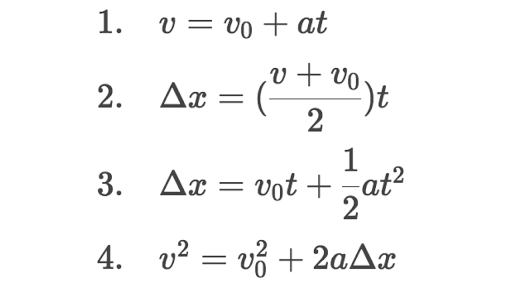Question #9974d
1 Answer
5 seconds
Explanation:
To solve this problem, we will need the kinematics equations which are in the image below:

First Let us cut the process into 2 pieces:
- When the ball was thrown vertically upwards till it stops in the air.
-
When the object stops in the air and starts falling down, till it reaches the ground.
-
When the ball was thrown vertically upwards, with initial velocity, 20 m/s, the gravity force was acting also on the object with an acceleration of -10 m/s^2 Acceleration is negative since gravity acts downwards while the object is going upwards.
To find the time spent while the object was traveling upwards, we will use the first equation:
We know that the final velocity(0) and the initial velocity(20) and acceleration (-10)
2.To find the time spent when the ball was traveling downwards, we first have to calculate the height of the ball by calculating the distance it travelled upwards, and adding it to the height of the building (25m):
To calculate distance travelled let us use the second formula (the 4th formula can be used as well):
To calculate the time flight time when the ball is traveling downwards we will use the 3rd formula (since we do not have the final speed when the ball hits the ground we cannot use 1,2,4 formulas):

